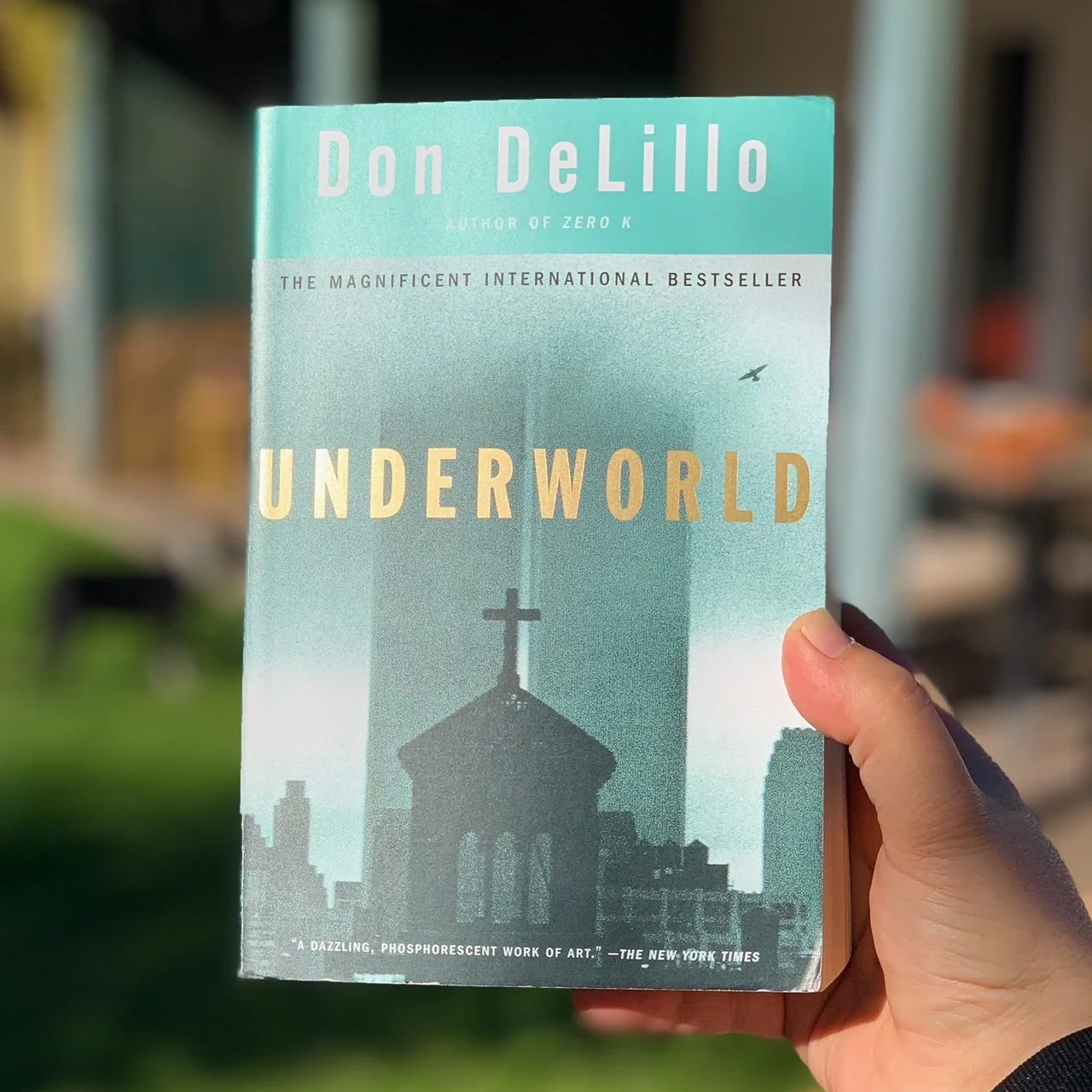Underworld
Ambition. It’s one of the things I admire about Don DeLillo’s strange, sweeping 831-page novel spanning the second half of the twentieth century—from Bobby Thomson’s home run to a Sister in cyberspace, from the cold and dark Bronx of October 1951 to Phoenix in the late 1990s, bronzed and baking in the sun.
There’s plenty of ick and doom and excess in Underworld—befitting the era, I suppose—but some really evocative prose as well, about time and memory and the forces that make our world what it is, the forces that make us who we are. Like this excerpt, on the perplexing passage of time:
“Seasons ran together, the years were a stunned blur. Like time in books. Time passes in books in the span of a sentence, many months and years. Write a word, leap a decade. Not so different out here, at his age, in the unimagined world” (p. 236).
And this, on the intertwined joys and sorrows of adolescence:
“What a wound to overcome, this passage out of childhood, but a beautiful injury too, he thought, pure and unrepeatable. Only the scab remains, barely seen, the exuded substance” (pp. 675-6).
And, finally, this, on stewarding the mysteries of faith and doubt:
“And what do you remember, finally, when everyone has gone home and the streets are empty of devotion and hope, swept by river wind? Is the memory thin and bitter and does it shame you with its fundamental untruth—all nuance and wishful silhouette? Or does the power of transcendence linger, the sense of an event that violates natural forces, something holy that throbs on the hot horizon, the vision you crave because you need a sign to stand against your doubt?” (p. 824)
Eight hundred pages of that kind of stuff, mixed in with scuzzy people in scuzzy places, of spiritual and material and carnal yearnings, of disposable lives and disposable stuff—and of what remains when it all comes crashing down.
Which brings us to that gloomy, ominous, iconic cover photograph. It has so much to say to us in light of the hope and heartbreak in the book, reckoning today (as we can’t help but do) with everything that has transpired since 1997, when Underworld was first published. At that time, the towers had been standing in lower Manhattan for twenty-odd years, recognizable the world over as the twin icons of economic power and ineffable longing. Four years later, everything would change. And the symbolism got even stronger.
Over the past couple of months, I would read fifteen or twenty pages of Underworld at a time (it’s best absorbed in small doses, I find) and then I’d close the book and stare at the cover. I’d study it in all its grainy glory. A couple hundred pages in, I went online to learn about the photographer, the Hungarian-born André Kertész, who took this photo from the window of his Greenwich Village apartment. For as long as he lived there, this was his view: Judson Memorial Church in the foreground and the World Trade Center rising behind it.
And then there’s the silhouette of a bird in flight. From this vantage point, frozen in time, it seems to be pointed at the upper floors of the towers, shrouded as they are in thick, dark mist. Yes, we see through a glass, darkly. It’s all we can do most of the time. Maybe all we can do all of the time.
No one needs me to summarize the interweaving stories and characters in Underworld, nor to opine on DeLillo’s unconventional approach to chronology here, nor how this lapsed Catholic author’s work is suffused with the unmistakable residue of faith.
Perhaps it’s enough for me to say this book is unlike any other I’ve ever read—not my favorite, necessarily, nor one I’m likely to reread—but one I’m sure to remember.
“Sometimes I see something so moving I know I’m not supposed to linger,” DeLillo writes. “See it and leave. If you stay too long, you wear out the wordless shock. Love it and trust it and leave.”

